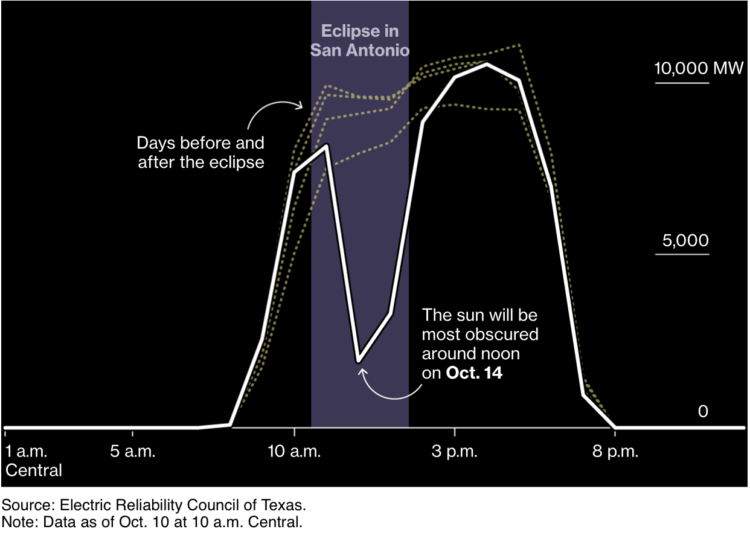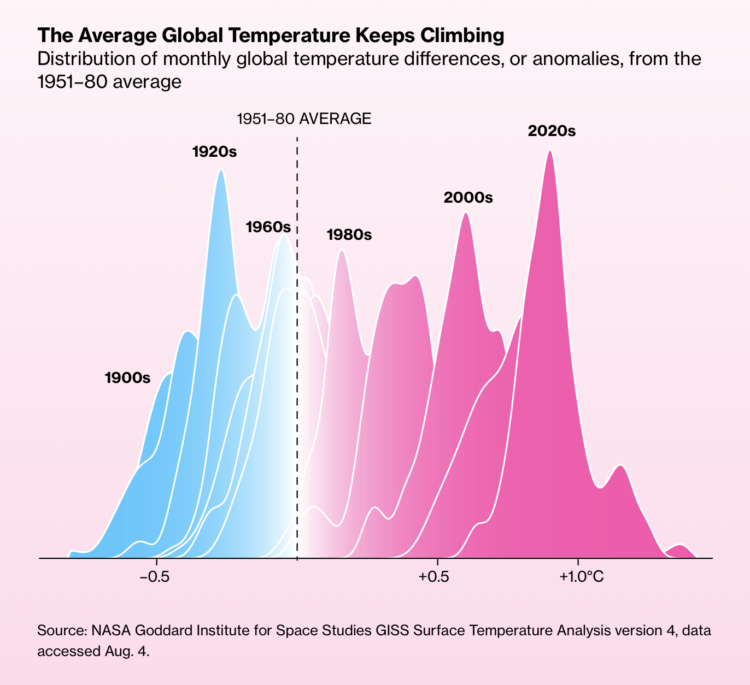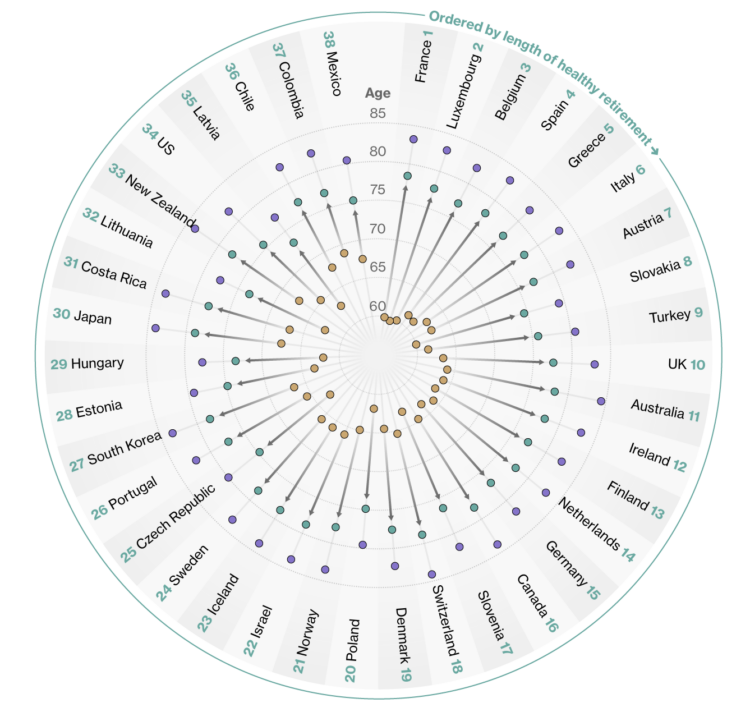Solar power is clean and all, but what happens when the sun is blocked by the moon and there’s suddenly no sunlight for a fixed period of time? For Bloomberg, Naureen Malik, with graphics by Denise Lu, describes the preparations that power companies will take during this weekend’s solar eclipse.
Category Archives: Bloomberg
Posted by in Bloomberg, eclipse, solar, Statistical Visualization
Billion dollar natural disasters
For Bloomberg, Rachael Dottle and Leslie Kaufman go with the combo stacked area chart and stacked bar chart on the top and bottom to show increased cost of billion dollar disasters and the counts over time. It looks like the sporadic tropical cyclones are causing the most damage.
Tags: Bloomberg, budget, disaster, government
Posted by in Bloomberg, budget, disaster, government, Statistical Visualization
Apple’s global suppliers
Most of Apple’s suppliers and manufacturing happen outside the United States and in China. But because of tensions between the U.S. and China, Apple has tried to shift to other countries. Bloomberg provides the breakdowns over time, showing the biggest increases in India and Vietnam.
Shifting towards more hot days, fewer cold days
It keeps getting hotter around the world. Not every single day. But over time, there are increasingly more hot days and fewer cold days.
For Bloomberg, Zahra Hirji, Rachael Dottle and Denise Lu lean into layered density plots to show the shift and the path towards extreme climates.
They show distributions, which can be a challenge for non-data people to understand. So they take their time in the beginning to explain what the chart type shows, with a combination of color, animation, and labeling that stays consistent through the article.
Tags: Bloomberg, global warming
Posted by in Bloomberg, global warming, Statistical Visualization
Manual data labeling behind the AI
One of the things that makes AI seem neat is that it sometimes feels like magic when you enter a question and get a reasonable answer in a human-like tone. For Bloomberg, Davey Alba reports on how some of that magic is just a bunch of people labeling data for low wages:
Other technology companies training AI products also hire human contractors to improve them. In January, Time reported that laborers in Kenya, paid $2 an hour, had worked to make ChatGPT less toxic. Other tech giants, including Meta Platforms Inc., Amazon.com Inc. and Apple Inc. make use of subcontracted staff to moderate social network content and product reviews, and to provide technical support and customer service.
“If you want to ask, what is the secret sauce of Bard and ChatGPT? It’s all of the internet. And it’s all of this labeled data that these labelers create,” said Laura Edelson, a computer scientist at New York University. “It’s worth remembering that these systems are not the work of magicians — they are the work of thousands of people and their low-paid labor.”
Generative AI exaggerates stereotypes
Perhaps to no one’s surprise, generative artificial intelligence models contain bias rooted in the data that drive them and by the people who design the systems. For Bloomberg, Leonardo Nicoletti and Dina Bass examined the extent to which the bias exists through the lens of Stable Diffusion.
Most of the piece is a rundown of what Stable Diffusion shows, but the biggest tell is the chart that compares the generated images against reality.
Tags: AI, bias, Bloomberg, Stable Diffusion
Posted by in AI, Bias, Bloomberg, Infographics, Stable Diffusion
Switching to electric school buses
For Bloomberg, Zahra Hirji and Denise Lu on the electrification of the national school bus fleet:
Most school buses today run on diesel. The climate footprint of a diesel school bus is about 3.3 pounds of carbon dioxide equivalent (CO2e) per mile, more than double the per-mile footprint (roughly 1.5 pounds of CO2e) for a bus powered on the average US electric grid, according to Argonne National Laboratory. If a large share of the American school bus fleet — the largest mass transportation system in the country — electrifies, that would translate to a significant emissions cut.
They used a LEGO school bus to show how a diesel school bus is retrofitted as an electric one, which is a plus in my book.
Tags: Bloomberg, electric vehicle, LEGO, school bus
Posted by in Bloomberg, electric vehicle, Infographics, Lego, school bus
Ski resorts dealing with fewer snow days
For Bloomberg Green, Jin Wu, Laura Millan and Hayley Warren, on the challenges ski resorts face with rising temperatures:
Artificial snowmaking has become more efficient, so it uses less water and electricity. But even with advanced technology, fake snow can’t always be deployed — and climate change is creating a more difficult environment, making water more scarce and temperatures too high for it to freeze. This year, skyrocketing energy prices forced some resorts in Japan to shut down their snow cannons and wait for natural flakes to fall.
The piece starts with a horizontal scroll through the mountains and then transitions to the chart above. There’s a nice flow between the photo into the abstract view, so they don’t seem like two separate things.
Posted by in Bloomberg, Infographics, skiing, snow
Countries with the longest healthy retirements
Bloomberg compared retirement years in the context of life expectancy and healthy life expectancy. The latter represents how long the average person stays healthy, which is shorter than the former.
The data are clear on one thing though: it’s pensioners in Western Europe who enjoy the longest, healthy retirement periods. The Americas, by contrast, have some of the shortest.
In the above, the yellow dots represent retirement age, the green dots represent healthy life expectancy, and the purple dots represent regular life expectancy. Starting at the top and going clockwise, countries are ordered by the difference between healthy life expectancy and retirement age.
I like circles, but I think I would’ve gone with a more list-like layout here. The patterns and reference points get lost in all the dots and spokes.
Tags: Bloomberg, health, retirement
Posted by in Bloomberg, Health, Infographics, retirement
Sankey diagrams to show change in opinion
For Bloomberg, Joe Mayes, Andre Tartar, and Demetrios Pogkas show shifts in public opinion in the UK, based on Bloomberg UK’s Levelling Up Scorecard. I’m into the gradients to show the opinion switches within groups.
Tags: Bloomberg, public opinion, UK
Posted by in Bloomberg, public opinion, Statistical Visualization, UK








